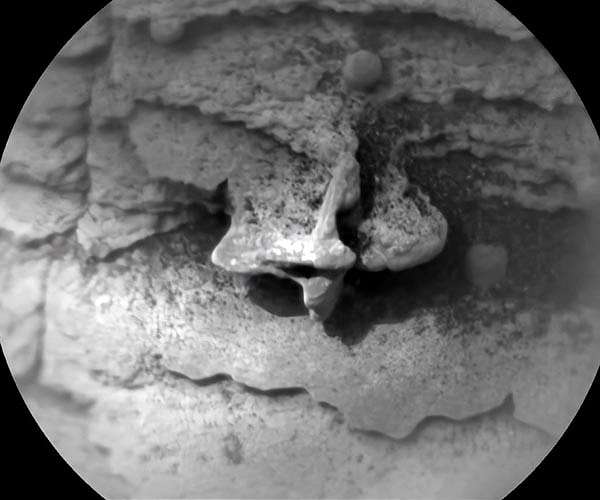ChemCam Laser Hits 1 Million Zaps on Mars, Continues Data Collection
by Clarence Oxford
Los Angeles CA (SPX) Sep 11, 2024
The ChemCam instrument, developed by Los Alamos National Laboratory, has fired its laser for the 1 millionth time on Mars. Positioned atop NASA’s Curiosity rover, ChemCam has been key to scientific discoveries since its deployment in 2012.
“Not only is this a remarkable technical accomplishment for our instrument, but it also represents a staggering amount of chemistry data from the surface of Mars,” said Nina Lanza, principal investigator of ChemCam. “Each laser pulse produces a single complex spectrum that individually provides a wealth of geochemistry information. And we have 1 million of those – and counting!”
ChemCam employs laser-induced breakdown spectroscopy to vaporize rocks and analyze the resulting plasma. By examining the light emitted, scientists can identify the elements present on Mars’ surface. The project seeks to determine Mars’ past habitability, exploring whether the planet could have once supported life.
“Our greatest strength lies in the international, technical and scientific collaboration around this project. Bringing this new method of analysis to Mars has opened up a new field of study, which consists of studying rocks at the grain scale,” added Olivier Gasnault, a research fellow at the National Centre for Scientific Research (CNRS) and the Institut de Recherche en Astrophysique et Planetologie (IRAP), and co-leader of ChemCam.
Significant Scientific Contributions
ChemCam has been instrumental in NASA’s mission and contributed to a range of key discoveries. In 2016, it identified manganese oxides, suggesting that Mars once had higher atmospheric oxygen levels. This evidence, along with the discovery of ancient lakes, has provided valuable insights into Mars’ Earth-like past.
A year later, ChemCam detected boron in salts within Gale Crater, an element that plays a crucial role in the chemistry necessary for life. In 2019, it found evidence of salty, shallow ponds that fluctuated between overflow and dry periods, challenging previous assumptions about Mars’ climate stability.
“We have found that Mars is much more chemically diverse than we expect, especially in rocks that are directly tied to water alteration, thanks to ChemCam,” commented Patrick Gasda, a research scientist at Los Alamos and ChemCam team member.
Earlier this year, Curiosity made a groundbreaking discovery of elemental sulfur, the first such finding on Mars in its pure form.
Curiosity’s original mission was planned to last just two years, yet more than 12 years later, the rover continues its exploration, with ChemCam contributing valuable data as long as the mission endures.
“We have learned so much from our 1 million spectra already, and I have no doubt that we will continue learning new things about Mars from these and future spectra for many years to come,” said Lanza.
A Decades-Long U.S.-France Collaboration
The ChemCam project represents a 20-year partnership between Los Alamos National Laboratory and IRAP in France. Over 70 researchers and engineers across 20 institutions globally work together, with the Jet Propulsion Laboratory also supporting instrument operations and data interpretation from Mars.
Related Links
Los Alamos National Laboratory
Mars News and Information at MarsDaily.com
Lunar Dreams and more



